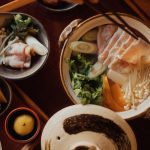Table of Contents
After eating my way through hundreds of street stalls across Thailand, from Bangkok’s bustling markets to hidden corners of Chiang Mai, I’ve learned the hard way what makes the difference between a memorable meal and a miserable night. Here’s your real-world guide to street food safety in Thailand – no tourist fluff, just practical wisdom from someone who’s made (and recovered from) every mistake possible.
The Morning Market Rule
The best street food comes early. Here’s why: morning vendors buy fresh ingredients daily, and the most popular ones sell out by noon. If you see a cart still using ingredients from morning service during evening hours, walk away. I learned this lesson painfully after eating pad thai from a vendor who hadn’t refreshed their ingredients since sunrise.
The Local Line Length Law
Don’t trust TripAdvisor reviews – trust the local line. If Thai office workers are willing to stand in line for 30 minutes in Bangkok’s heat, that food is both safe and exceptional. But here’s the catch: distinguish between tourist lines and local lines. If you see uniforms and motorbike delivery drivers in line, you’ve found the real deal.
The Temperature Test
Hot food needs to be steaming hot, cold food properly chilled. Seems obvious, but here’s what most people miss: watch how vendors reheat food. If they’re just warming the surface of pre-cooked food, move on. The best vendors cook everything fresh or maintain constant high temperatures. That famous Som Tam vendor who pre-makes batches? Skip it, no matter how good it looks.
Sauce Safety Secrets
Sauces are often the hidden culprit of food issues. Watch how vendors store and serve their condiments. Good vendors keep sauces refrigerated or make them fresh daily. If you see cloudy sauce bottles sitting in the sun all day, that’s your red flag. I once got violently ill not from the noodles, but from fish sauce that had been sitting out for days.
The Rice Timing Trick
Rice sitting at room temperature is a bacterial playground. Safe vendors make fresh batches every few hours. Here’s the local secret: visit rice vendors during peak meal times (7-9 AM, 11:30-1:30 PM, 6-8 PM) when turnover is highest. Ask “Khao suk mai?” (Is the rice fresh?) – if they hesitate, move on.
The Ice Investigation
Not all ice is created equal. Thailand has two main types: factory-made drinking ice (round holes, super clear) and cooling ice (solid blocks). Safe vendors use drinking ice for beverages and block ice for display. If you see them crushing display ice for drinks, skip it. I spent two days in my hotel room after accepting a smoothie made with display ice.
Seafood Selection Wisdom
Seafood requires extra vigilance. Look for vendors who display their seafood on ice and cook it to order. If you can’t see where they store the raw seafood, don’t risk it. The best seafood vendors have high turnover and small displays – they’re selling what they bought that morning, not stockpiling.
The Preparation Station
Watch how vendors handle money and food. Professional vendors have separate staff for handling cash and preparing food, or they use plastic gloves that they change regularly. If you see someone handling money and immediately touching your food, that’s a warning sign. The safest vendors have dedicated food prep areas that they keep meticulously clean.
Water Protocol
Never drink tap water or accept ice from unreliable sources. But here’s what people don’t tell you: even bottled water needs checking. Look for bottles with intact seals, and check the brand against known counterfeits (yes, fake water is a thing in tourist areas). I keep a list of reliable bottled water brands on my phone.
The Meat Mystery
Raw meat should never be sitting at room temperature. Watch for vendors who keep raw meat refrigerated or on ice until cooking. If you see pre-grilled meat being stored at room temperature and reheated to order, that’s a hard pass. The safest meat dishes are those cooked fresh and served immediately.
Time and Temperature Tips
The danger zone for food is between 4°C and 60°C (40°F-140°F). Good vendors never leave food in this range for more than an hour. Watch how long food sits out and at what temperature. Soups should be actively boiling, grilled items should be hot off the fire, and chilled items should be sitting on ice.
Cross-Contamination Control
Watch for signs of cross-contamination. Safe vendors use separate cutting boards and utensils for raw and cooked foods. If you see raw chicken being prepped on the same surface as fresh vegetables, walk away. One of my worst food experiences came from a vendor who used the same knife for everything without cleaning it.
The Peak Hour Principle
Eating during peak hours isn’t just about following crowds – it’s a safety strategy. During rush hours (7-9 AM, 12-1 PM, 6-8 PM), food turnover is highest, meaning ingredients are constantly being replaced and cooked fresh. But here’s the expert tip: arrive at the start of these rushes, not the middle or end. Early rush hour customers get the freshest ingredients, while late rush means vendors might be trying to clear out older stock.
Many vendors prep specific dishes for known rush periods. That famous khao man gai (chicken rice) vendor near your hotel? They probably prepare fresh batches specifically for the office lunch rush. Time your visit right, and you’ll get the prime serving from a fresh batch rather than leftovers being kept warm.
Emergency Preparation (Expanded)
Despite the best precautions, sometimes things go wrong. Your emergency kit should include:
- Activated charcoal tablets (taken at first sign of distress)
- Oral rehydration salts (premium brands like Hydralyte are worth the extra cost)
- Basic antidiarrheal medication (both Imodium and natural alternatives)
- Probiotics (start taking them before your street food adventures)
- The address of the nearest international hospital is written in both English and Thai
- A food allergy card in Thai if you have any dietary restrictions
- Contact information for your travel insurance’s 24-hour assistance line
- Small packets of tissue paper (many street stalls don’t provide napkins)
- Hand sanitizer and wet wipes
Keep photos of your important medical documents and insurance cards in an easily accessible offline folder on your phone. Most importantly, know when to seek professional help. If you experience fever with stomach issues, or symptoms persist for more than 24 hours, don’t try to tough it out – seek medical attention.
Making Smart Choices
Street food in Thailand is one of life’s great pleasures – don’t let fear hold you back. Follow these guidelines, trust your instincts, and remember: if something doesn’t feel right, there’s always another vendor around the corner. Ready to explore Thailand’s amazing street food scene safely?

I’m Garrett, a seasoned photojournalist with a passion for uncovering the world’s hidden treasures. My journey is fueled by a deep curiosity for diverse cultures and breathtaking landscapes. When I’m not behind the lens capturing the world’s wonders, you can find me exploring underwater realms or sharing my passion for discovery with my two adventurous children.




